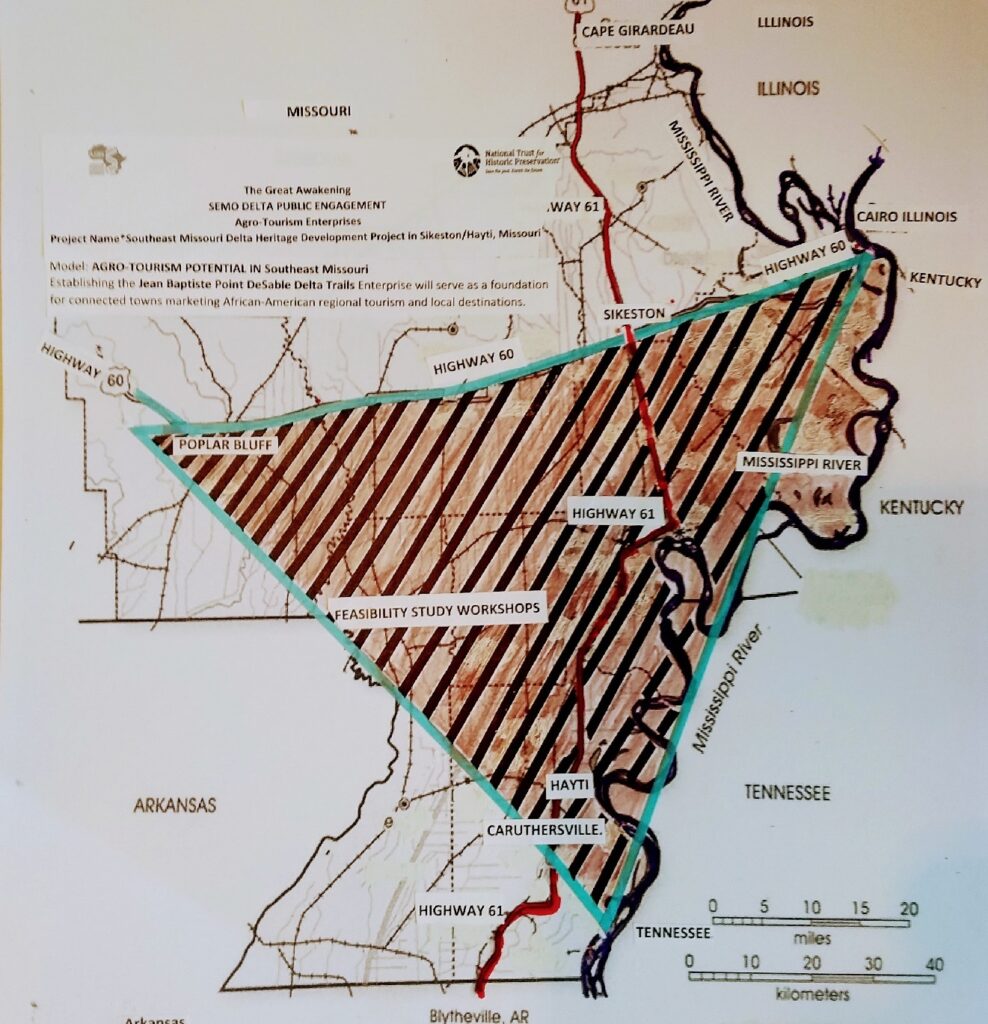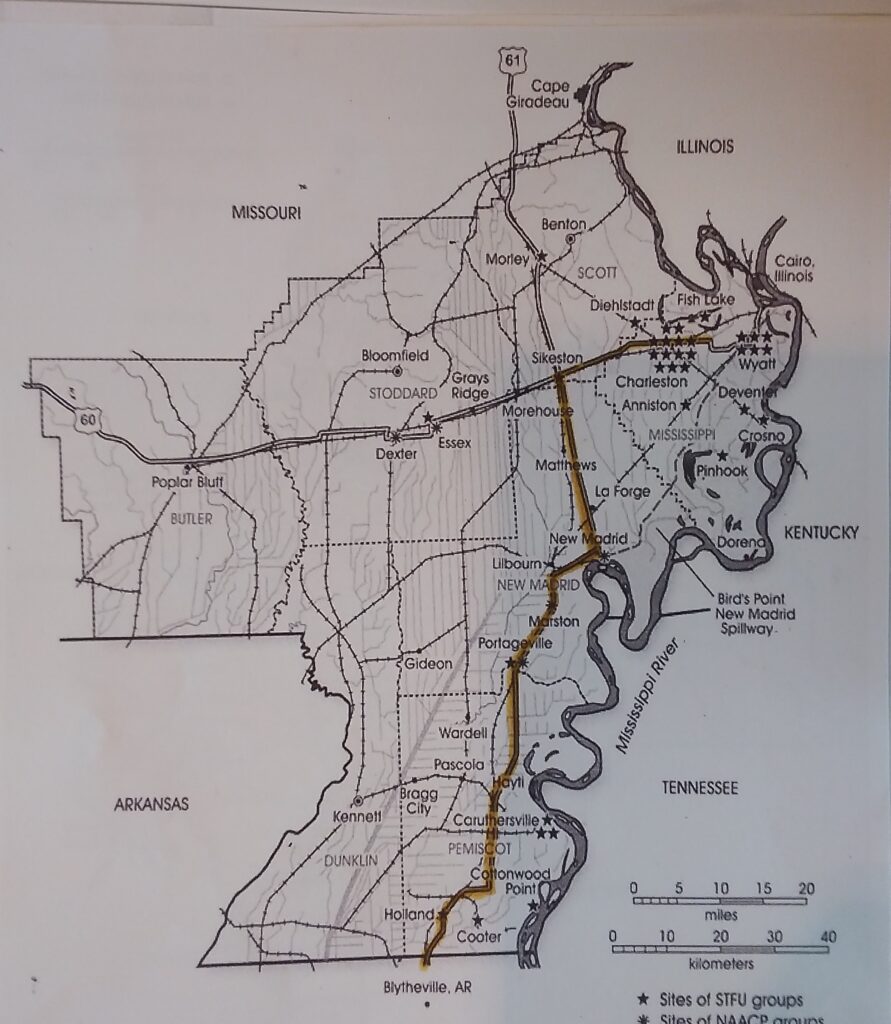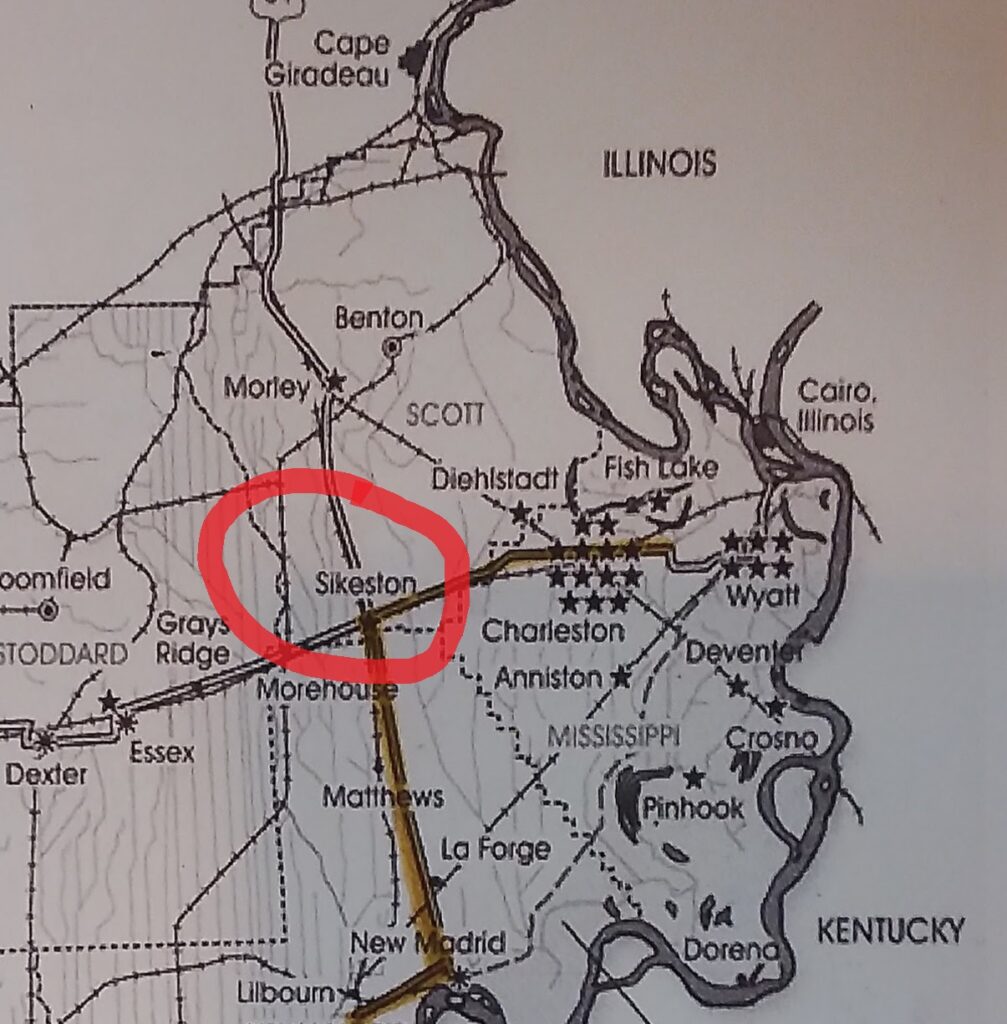Southeast Missouri Delta Heritage
Development Project in Sikeston/Hayti, Missouri
Mississippi River Delta basin. “The immediate focus is on” Southeast Missouri Delta Heritage Development Project in Sikeston/Hayti, Missouri, Phase One will commence September 2021; planning and education programs designed to encourage preservation at the local level by providing organization human resources, experts and expertise for the acquisition, maintenance, and preservation of historic landmarks and memorials burial grounds projects. This resurgence of economy growth accomplished by encouraging residents to take stock of their communities with the goal of establishing long-term investments and the ability to develop job creation in HUBZone area’s areas of the state of Missouri.

Southeast Missouri Black-towns represent Resilience and Relevance:
Exploring all possibilities to save Historic Places and Things that originated during the Great Northward Migration out of the rural Southern United States to the Midwest urban areas between 1916 and 1970 also known as “the Black Migration”
Racial segregation and discrimination in the Southern states where Jim Crow laws were implemented and enforced by Terrorist groups forced (6) millions of blacks on the trail of freedom seekers, many to Migrated into the Bootheel of Missouri.

The African Scientific Research Institute created a resolution to make the recommendation that Lincoln jr. High School in Sikeston be placed on the National Register of Historic Places! Strategically, the first step to uncovering backstories in the turbulent era of the Great Migratory movement surrounding the peopling of Southeast Missouri’s Delta rural region to full efficacy there are two goals; to establish Lincoln Junior High School as a major tourist attraction and to engage the citizenry in public discourse. We want to improve the infrastructure status for Blacks in Sikeston, Missouri by getting as many structures as possible onto the National Registry of Historic Places and Things.

Sikeston Sunset Addition became a sanctuary for bewildered travelers seeking a better life beyond backbreaking unrewarded work as sharecroppers in southern states. Many families desired an equity solution beyond the largest African-American settlement in the Southeast Missouri region for more profitable venues relevant to this backstory.
In its heyday of community prosperity and self-sufficient economics, most of it generated from family members with new found work from the industrial complex, the Black population increase stayed constant because of the agricultural base. Sikeston as well as many Black towns and rural enclaves were a contributing factor as sanctuaries in what is known as “Sunset Addition” relegated to racial segregation.
The migratory movement from antebellum southern states framed by the mighty Mississippi River basin to the west is our focus. Louisiana, Mississippi, Tennessee and Arkansas travelers were funneled directly into a concentrated Black force in-which great changes took place. In many cases lifestyles improved, anxieties dissipated, they found excellency in schooling and sustainable economies that created a multitude of jobs. Mostly agriculture-based laborers and above all families were “forged in the crucible of aspirations” for freedom, justice, and equality that once seemed impossible.
